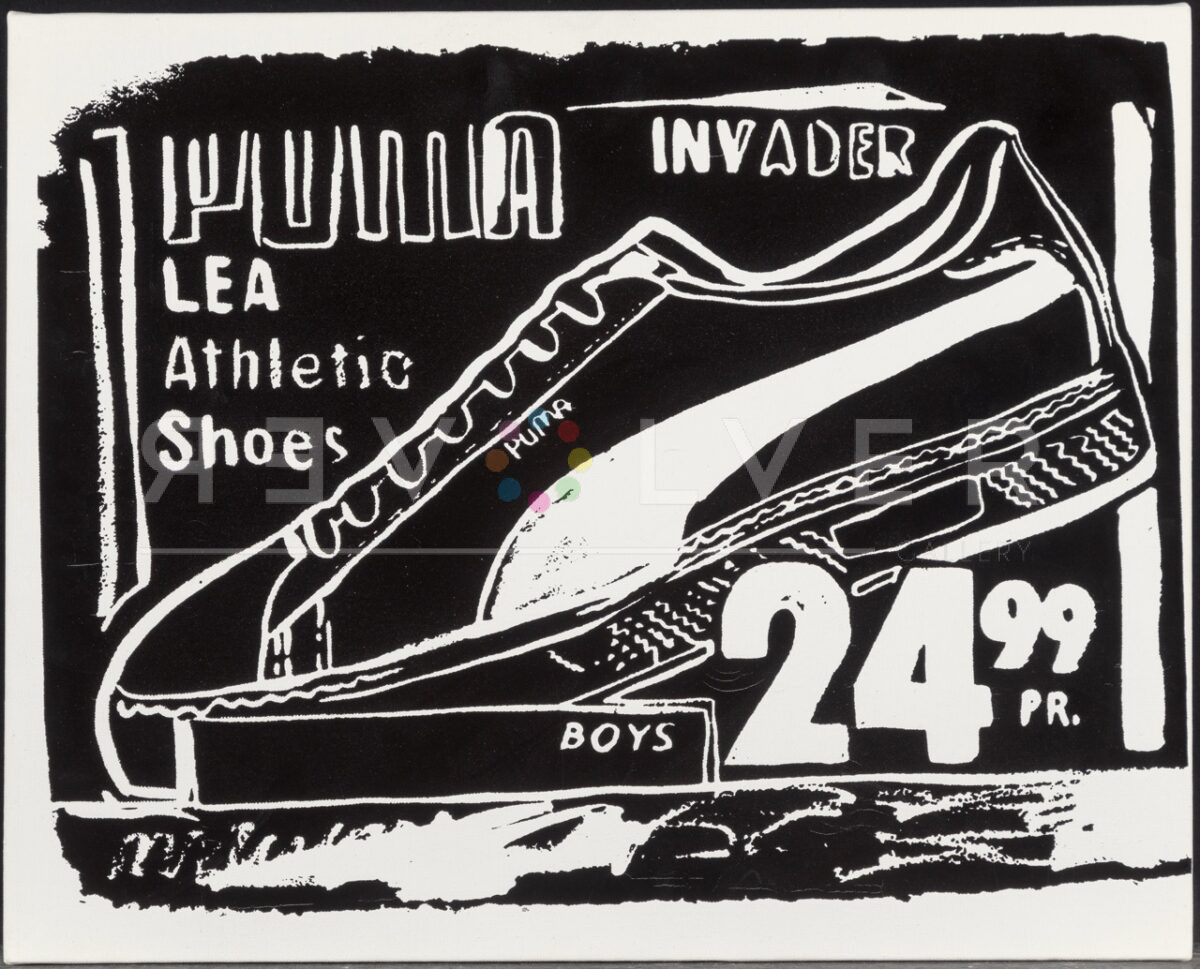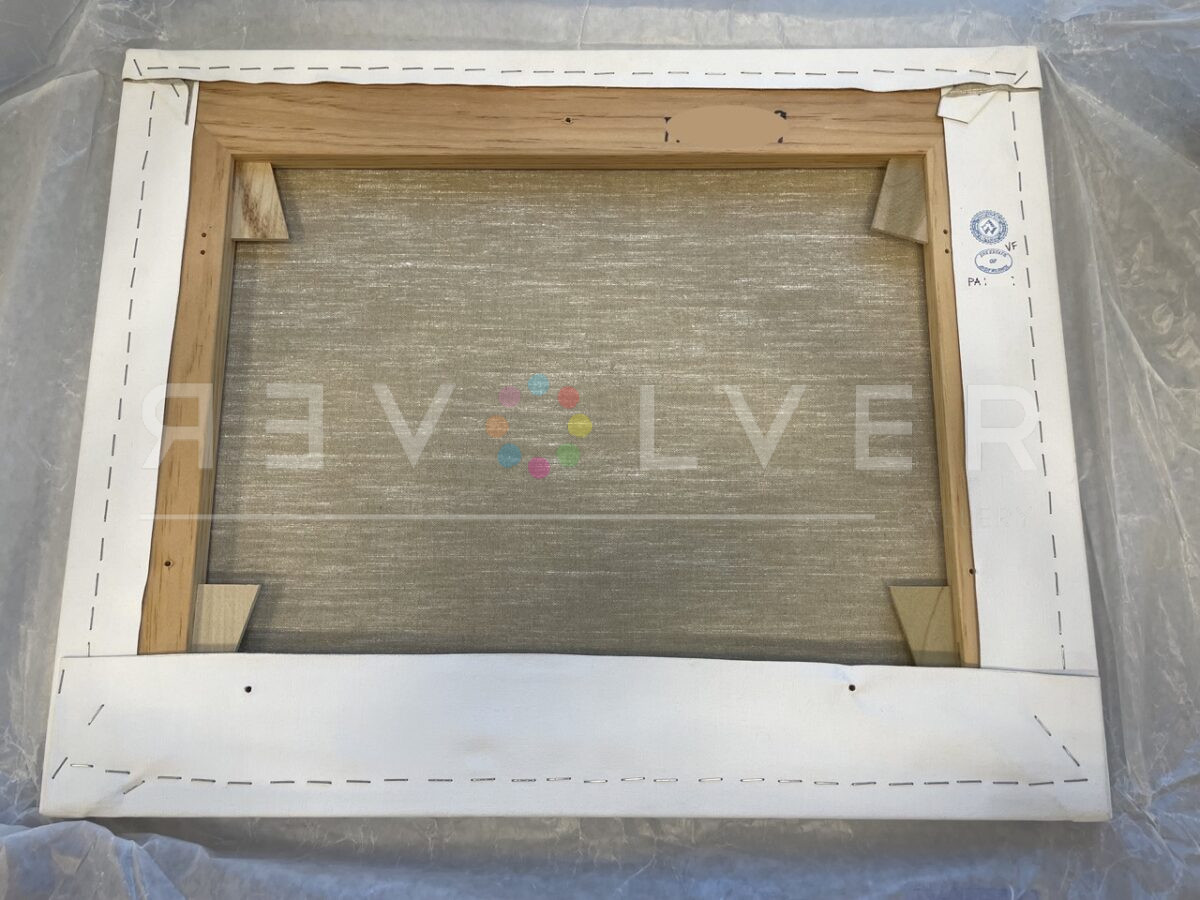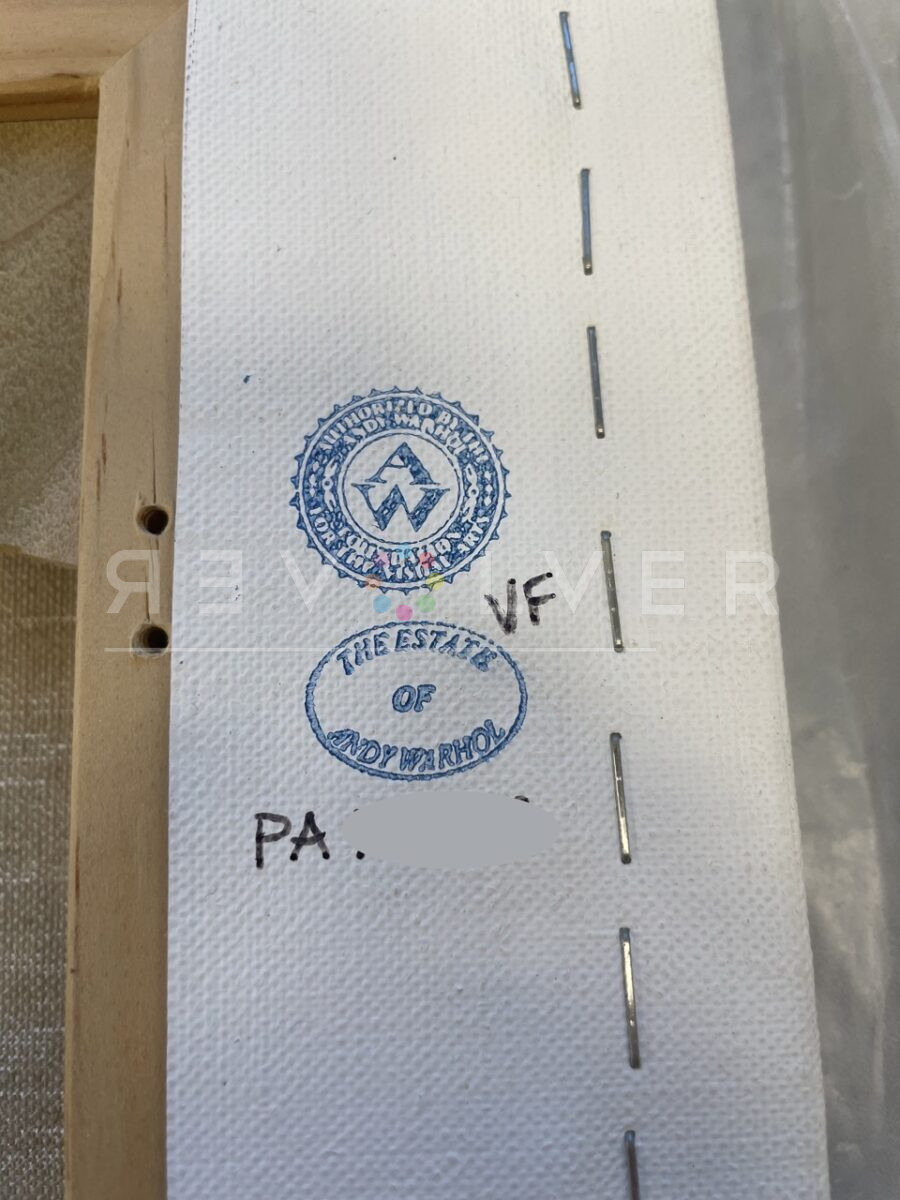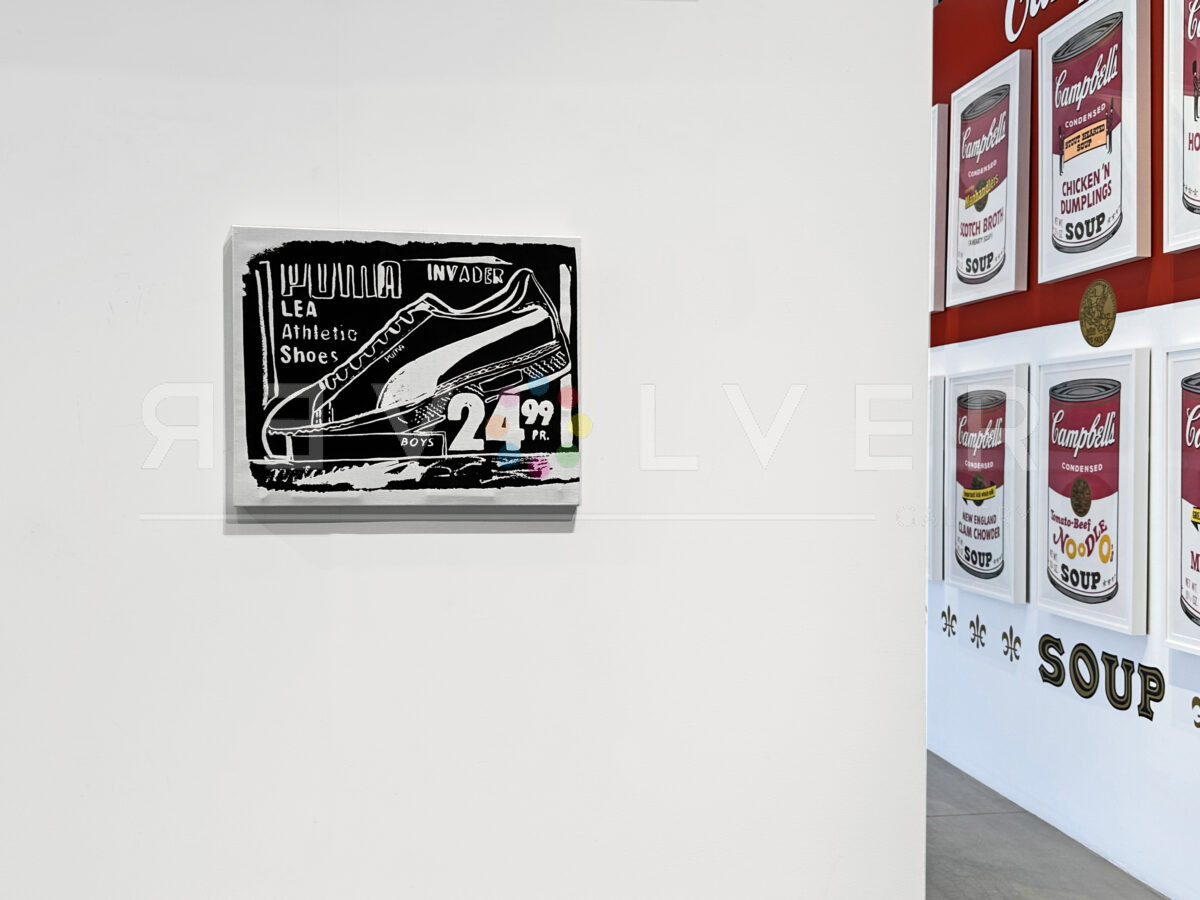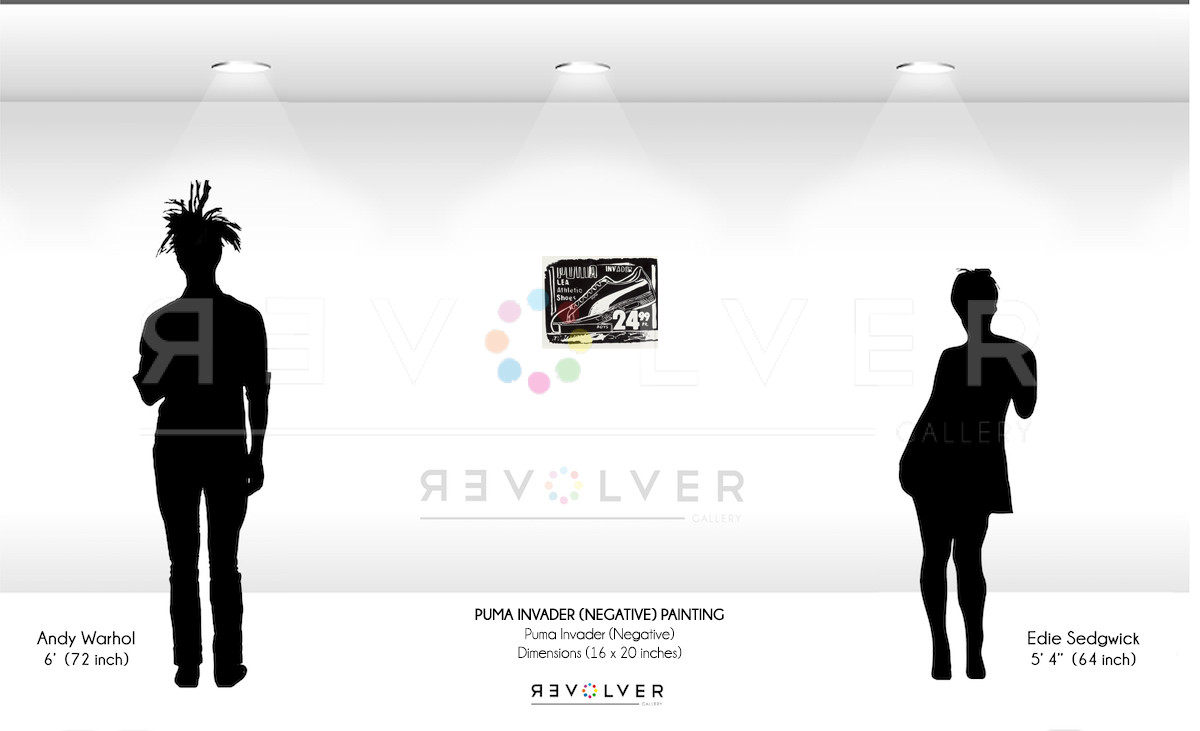Puma Invader (Negative) by Andy Warhol presents a stark black and white contrast, reminiscent of a photographic negative. This painting depicts a single athletic Puma shoe, angled slightly to the right, which occupies the majority of the canvas. The image is highly graphic, with solid areas of black and bold outlines defining the form of the shoe against a white background. The shoe’s details, such as the laces, the contour of its design, and the sole pattern, are rendered with clarity and simplicity.
At a glance, Warhol’s Puma artwork could have easily been included in his Ads portfolio, alongside masterpieces like Chanel, and Apple. Similarly, the Puma composition includes text elements that mimic advertising, with the brand name “PUMA” at the top left corner and the product name “INVADER” above the shoe. The text “LEA Athletic Shoes” and “BOYS” flank the shoe, while the price “$24.99 PR.” is prominently featured at the bottom right Warhol’s use of text is reminiscent of commercial signage and serves to underline the bold consumerist theme.
In the greater context of Warhol’s career, the Puma Invader (Negative) is a reflection of his enduring fascination with consumer culture and brand commodification. By choosing to depict a commercial product in the style of a photographic negative, Warhol continues his exploration of mass media and its implications. This work can be seen as a commentary on the nature of advertising, the role of branding in consumer identity, and especially the intersection of art and commerce.
Created during the last years of his life, this piece also suggests a mature phase of Warhol’s career where he was deeply entrenched in the examination of pop culture symbols and their repetition. His choice of producing a negative image alongside the positive ones could imply a deeper contemplation on the inversion of meanings in the consumerist world, or perhaps a commentary on the fleeting nature of material desires.
The use of a negative image also resonates with themes of absence and presence, and by choosing to present the shoe in this manner, Warhol invokes a sense of the uncanny—taking a familiar object and rendering it strange. It’s also a technical nod to Warhol’s career-long practices, using silkscreen printing and photographic imagery to create his artworks.
Overall, Puma Invader (Negative) encapsulates Warhol’s interest in the commercial, the common, and the iconic, all while encapsulating the power of pop art to blur lines between high and low culture. This piece, by integrating commercial imagery with artistic technique, exemplifies Warhol’s lasting impact on how art is understood in relation to consumerism and popular culture.

